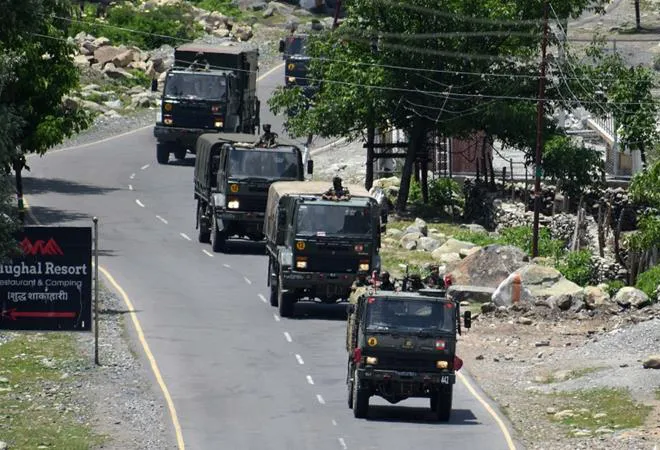PM Modi has been to Ladakh, where he visited injured troops and addressed jawans. His style was somewhat theatrical, but he has raised the morale of the forces and the country. The tough talk was, no doubt, aimed at the domestic constituency; the Chinese go by deeds rather than words and so we are still left with the problem of a restoration of status quo ante as of May 4.
Reports now suggest that both sides have begun pulling back 1.5 km each in Galwan and Hot Springs/Gogra area; Pangong Tso remains a problem area. This is for the good, but can only be seen as a first step to fix the problem permanently, as was the stated intention of the 1993, 1996 and 2005 agreements.
The responsibility to set the situation right rests with Beijing because it is the party that has violated the long-standing agreements to maintain peace along the LAC. But equally, it is in our own interest to terminate this crisis which is exacting a huge price in terms of resources and effort, at a time when we are fighting the Covid-19 pandemic.
The choices before us are stark. It was the Galwan incursion that was the serious one because of its proximity to a key highway of ours. But there seems to be no agreement yet on two other important areas, in Depsang and Pangong Tso. And beyond disengagement there as well is the task of persuading China to permanently settle the differences over the LAC. In other words, delimit a line acceptable to both sides in detailed maps. Since this task has yet to be accomplished, we should continue to pursue a mix of policies using military, diplomatic or economic tools to push the Chinese to act on the issue.
Though we have built up a force of nearly four divisions in the area, well balanced with armour, artillery and air assets, we cannot contemplate a military riposte casually. Any action must factor in the possibility of a larger India-China conflict if we act to vacate the encroachments in the Ladakh region.
Making emergency acquisition of military material, as we have done, is not a good sign. For four successive years, the Services have received substantially lesser money than they asked for their modernisation. Some shortages have been set right through emergency acquisitions in 2017 and 2018, but there are others built into the system.
What has encouraged the Chinese is the growing gap between the capabilities of the PLA and the Indian military arising from the resource crunch we are suffering from. This is not something that has happened overnight, but has emerged over two decades.
Now, an additional burden will be imposed by the logistics of dealing with three additional divisions in Ladakh. Stocking for one division there is a trying task, but doing it for four will be very arduous and expensive. But a credible military posture will have its own payoff, provided we are clear-headed about the goal, which is not to fight a war, but by our deterrence capacity, force China to back off.
In this endeavour, economic policy is a force multiplier. The government has sent a tough signal by banning 59 Chinese apps, but they generate small profits for their parent companies. What will matter, is trade and investment. Total trade tops $90 billion, most of it in Chinese goods destined for the Indian market. Official figures put Chinese investment at $2 billion, the actual sum is likely to be several times that. We may be small-time players when it comes to trade with China, but the threat of tariffs on Chinese goods and restrictions on investment has a certain value, given the pushback China is facing on this account in the US and Europe. The steps we take must be carefully calculated and not impose greater costs on us, than on China. But even so, they should signal our serious intent to do whatever we can to influence Chinese behaviour.
The importance of a permanent fix to the LAC problem should not be underrated. We need to convince China that its policy of using the undelimited LAC as a means of pressuring India will now yield diminishing returns. For years, Modi has been trying to convince the Chinese of this point, because an unclear LAC has led to crises in 2013, 2014, 2019 and now in 2020, where it has led to a serious clash in which lives have been lost.
Disengagement by itself will not be enough, we need to ensure that the incursions are put to an end permanently, and this can happen if we clarify where the LAC runs, something both countries had signed on to do but have not done because of Chinese mendacity.
Ensuring peace and stability at the LAC has never been as important as it is today. The war against the pandemic has hit us hard, indeed, we do not even now know just how things will pan out since the infection is yet to peak in the country. Recovery will take years, and India will need more trade, more investments, lesser restrictions and a peaceful and stable periphery. In dealing with the crisis in Ladakh, we should not miss the wood for the trees.
This commentary originally appeared in The Tribune.
The views expressed above belong to the author(s). ORF research and analyses now available on Telegram! Click here to access our curated content — blogs, longforms and interviews.




 PREV
PREV


